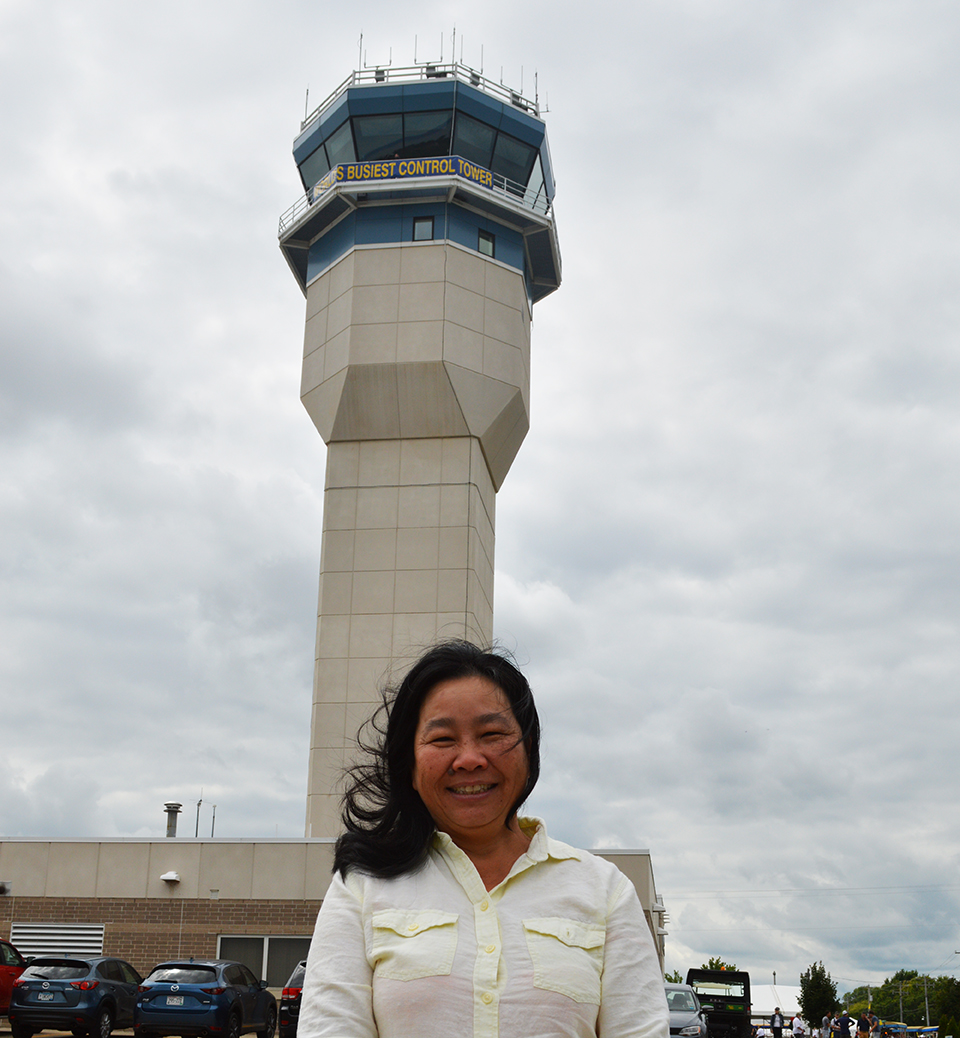NASA Researcher: Work Hard, Study Harder
By Barbara A. Schmitz
July 27, 2018 - As a 6-year-old in Vietnam, Huy Tran said the moon was essentially her streetlight that allowed her to see at night. “I was excited at the thought that somebody could land there,” she recalled.
Huy had heard about Neil Armstrong landing and walking on the moon, but she really wanted to see it. Since few homes had electricity or TVs in her small village, she and other children went to the home of the commander, who had a 9-inch black-and-white TV. While other children peaked through the windows from the porch, she was too short to see. So, she went around to the back, climbed a mango tree, and, dangling from a branch, she peeked through a hole in a roof.
“I didn’t know it was NASA at the time, but I knew I wanted to work there someday,” she said.
The odds, however, were not in her favor. In April 1975, Saigon fell. “You grow up fast in a war,” she said. “I knew I had zero chances of going to college then. It was just about survival; everything else was put on hold.”
But after four years under the communist regime, her family escaped Vietnam by boat. She spent a year in a refugee camp in Indonesia before arriving in the U.S. in March 1980 at 16.
Tran said she worked hard, and studied even harder in high school. “I’d do the homework, and then do extra homework,” she recalled, although she found math, chemistry, and physics easy. She graduated from high school and was accepted to college. That’s when she saw a flyer about an internship at NASA’s Ames Research Center.
“I drew up my résumé, turned in my grades, and surprisingly they called me for an interview,” she recalled. She got the job in the thermal protection material laboratory, helping to do research on how to improve the space shuttle tiles. That NASA internship led to another NASA internship working in the airworthiness division. After graduating with a bachelor’s degree in materials engineering, NASA hired Huy full time.
Today, she’s the director of aeronautics at NASA’s Ames Research Center in Mountain View, California, and made her first visit to EAA AirVenture Oshkosh this year.
“We deal with everything that flies and how it flies,” she explained. “My job is to manage a set of researchers working on the air traffic management system to enable a more efficient air traffic system.” They are currently deploying surface management technology at some busy airports, in an effort to make it more efficient, which means less wait time at the gate or on the runway.
They are also working on the UAS Traffic Management system, or UTM, and addressing the growth of air space users, particularly low attitude users like drones, she said. Beyond that, they are looking to address open-air mobility, such as flying taxis as well as safety issues, reducing the time to certification for new systems or software, and more.
Huy credits her success to a mentor who gave her advice that she still heeds today. “I was working on a project that didn’t turn out the way I thought it should be,” she said. “I was so upset and frustrated that I had wasted so much time and funding, but he told me not to be upset. He said, ‘If you get it right the first time, it would be ‘search’ rather than ‘research.’ That comment helped me to not get upset when things don’t go as planned and to be a better researcher.”
Huy has certainly had highlights in her career, like creating the thermal material used on Mars missions that protected rovers through their entry to the Mars atmosphere.
Huy and her team also built the heat shield that protected the Stardust Sample Return Capsule, the first sample return mission from a comet. “It came back in 2006 and nobody thought it would make it,” she said. “It was the fastest Earth entry object every built — 12.9 km per second.” Today the Stardust capsule is on the second floor of the Smithsonian National Air and Space Museum.
But she’s also known disappointments, like when the two Mars Deep Space 2 microprobes failed to send their signals back to Earth after entry. “The orbiter crashed because of a unit problem, then the lander robot didn’t fire the rocket correctly and it crashed, too,” she said. That meant the two probes weren’t released correctly. “Everything failed at the same time,” she said. “But you learn from that, and then move on.”
She said NASA is always looking for good engineers, and suggested people go to www.USAJobs.gov and keep their résumés updated.
To youth interested in STEM careers, Huy recommends they follow their heart. “I wanted to be in science, and if I stayed in Vietnam, I probably would have been a chemistry teacher,” she said. “But I had a higher goal, and when the opportunity presented itself to me, I grabbed it and ran with it.”
It’s important to work hard, she said. “Don’t just do your homework. Do extra homework,” she said. “Go out and make yourself uncomfortable. Try new things. Be open minded. Learning is human nature.”

